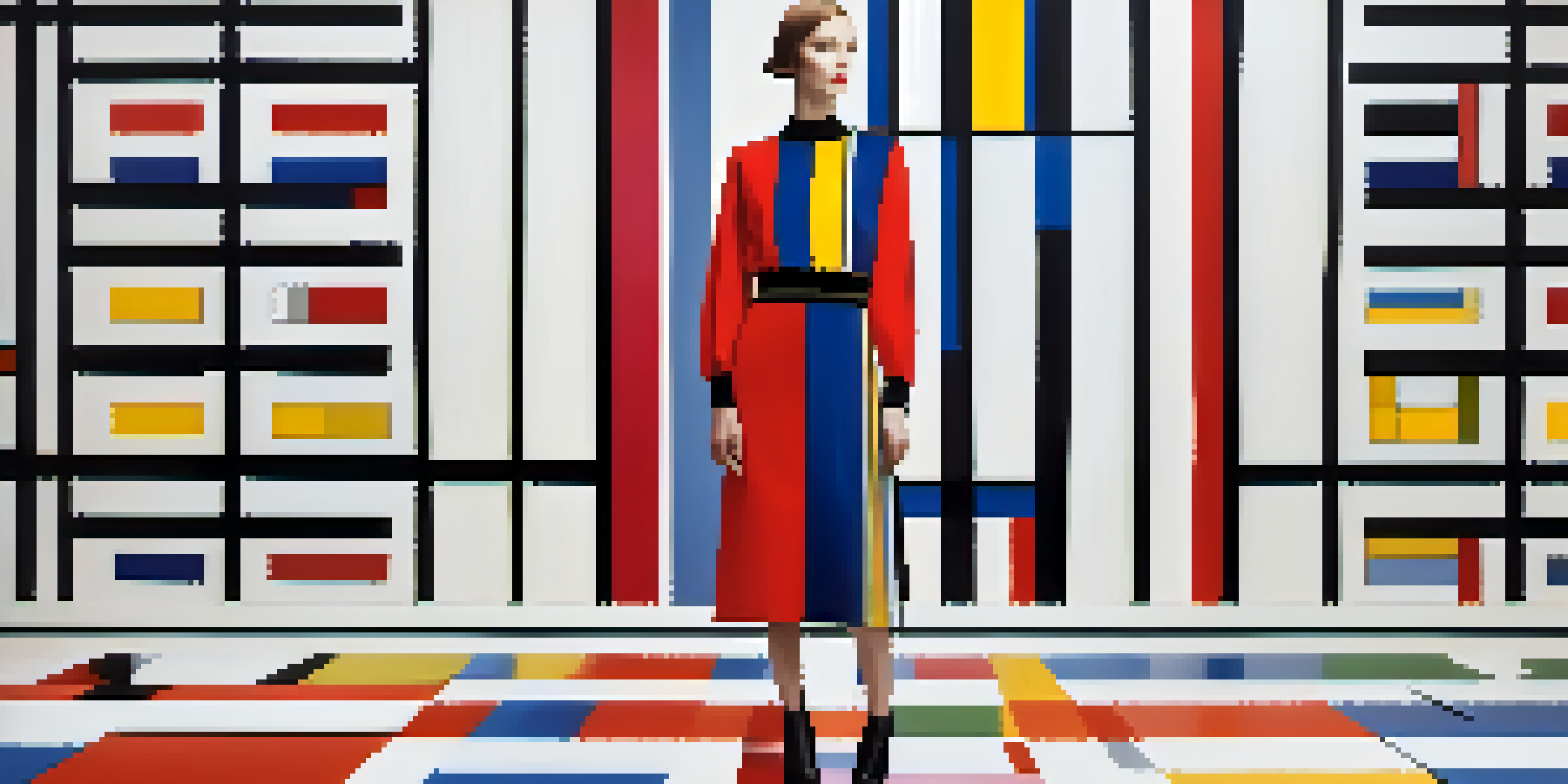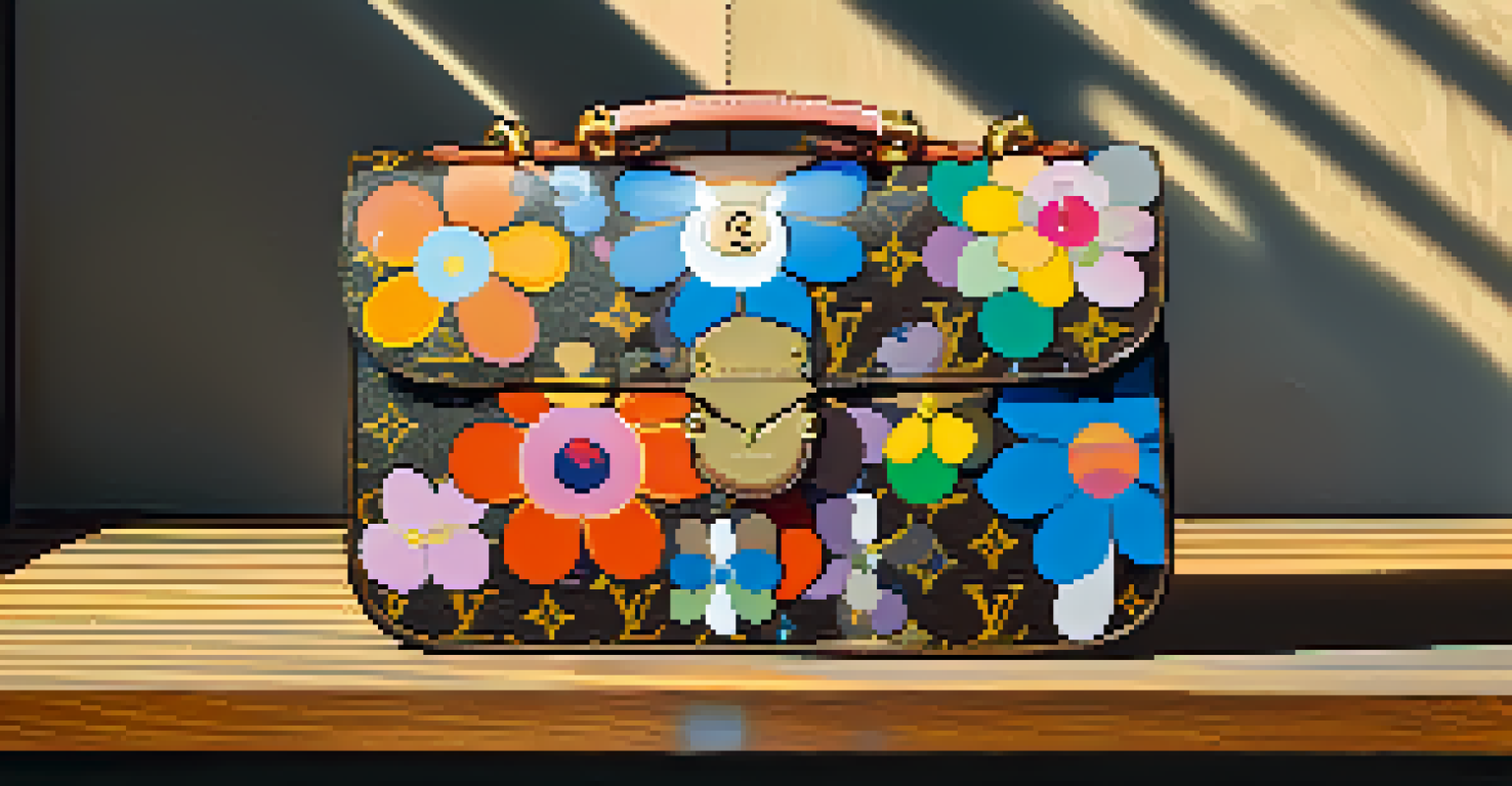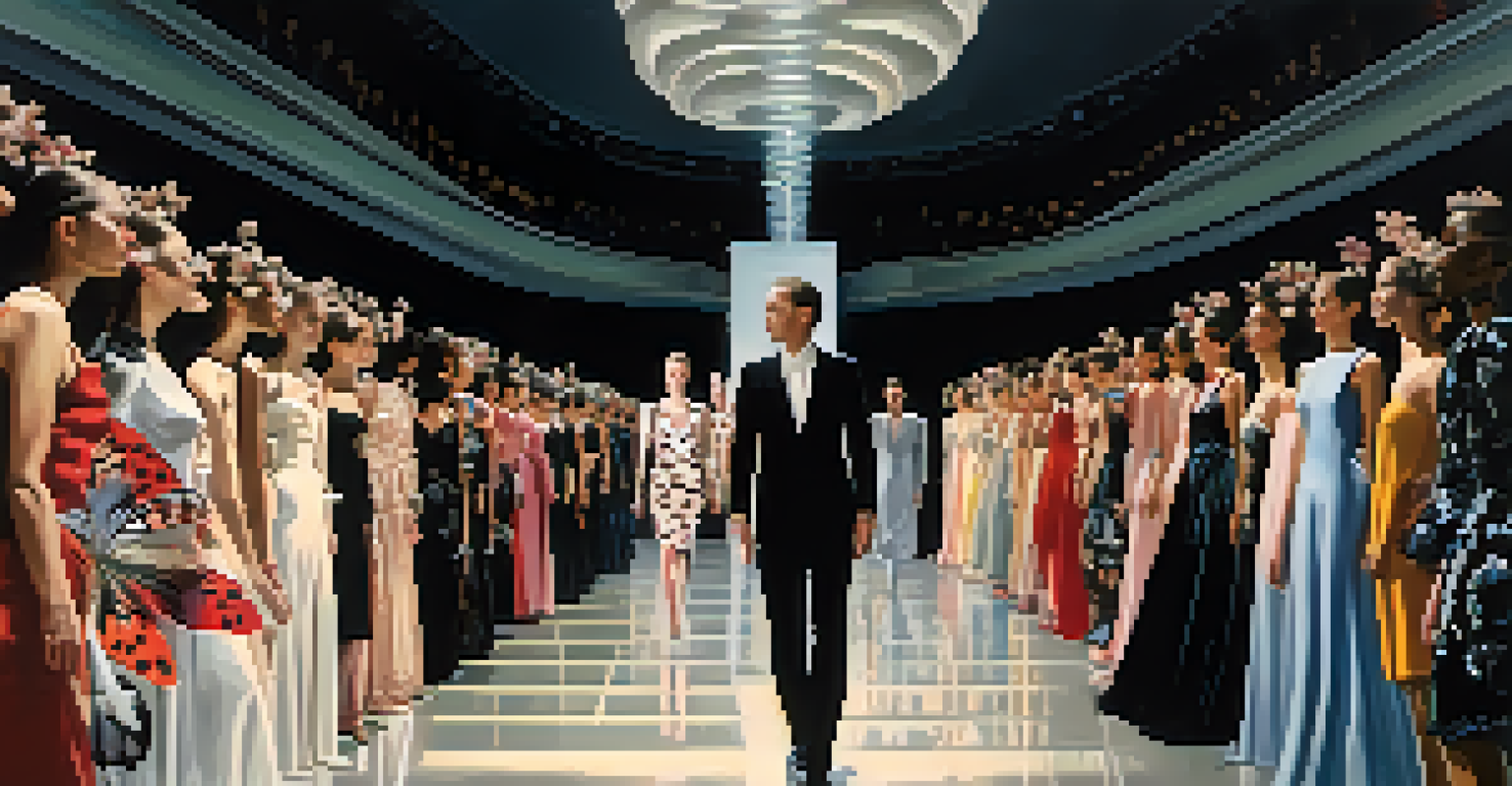High Fashion Meets Art: Notable Collaborations in Detail

The Intersection of Fashion and Art: A Brief Overview
Fashion and art have always shared a close relationship, influencing each other in profound ways. This intersection breathes life into both fields, creating unique expressions that challenge conventions. Historically, artists have found inspiration in fashion, while designers often draw from artistic movements to craft their collections.
Fashion is the armor to survive the reality of everyday life.
One could say that this collaboration is like a dance, where each partner brings their own style to the floor, resulting in a performance that captivates audiences. It's not just about clothing; it's about storytelling, culture, and identity. By blending these two worlds, designers can elevate their work to new heights, making statements that resonate deeply.
As we delve into notable collaborations, we’ll see how these partnerships have transformed runways and galleries alike. From bold prints to avant-garde designs, the influence of art in fashion has created lasting impressions that continue to inspire new generations.
Yves Saint Laurent and Piet Mondrian: A Colorful Union
One of the most iconic collaborations in fashion history was between Yves Saint Laurent and the Dutch painter Piet Mondrian. In 1965, Saint Laurent launched a collection featuring a dress inspired by Mondrian's famous geometric paintings, bringing art directly into the realm of haute couture. The bold colors and clean lines of Mondrian's work translated beautifully into wearable designs, making a statement that was both artistic and fashionable.

This collection not only showcased the beauty of abstract art but also established a new way of thinking about fashion as a form of artistic expression. It demonstrated that clothing can be more than just fabric; it can reflect the complexities of art and culture. The Mondrian dress quickly became a symbol of the 1960s, embodying the spirit of modernism and rebellion.
Fashion and Art: A Dynamic Duo
The collaboration between fashion and art creates unique expressions that challenge conventions and elevate both fields.
Today, this collaboration is still celebrated as a quintessential example of how fashion can elevate art and vice versa. It serves as a reminder that creativity knows no bounds and that the canvas of fashion is as rich and varied as that of painting.
Andy Warhol and Fashion: Pop Art Meets Couture
Andy Warhol's influence extends far beyond the art world; his unique vision has left an indelible mark on fashion as well. Warhol's association with brands like Banana Republic and his iconic Campbell's Soup can designs have seamlessly merged pop art with high fashion. This blending of art and apparel created a fresh perspective that resonated with a broad audience, making art accessible in everyday life.
Art is anything you can get away with.
Warhol's approach was revolutionary—he turned the mundane into the extraordinary. His colorful prints and playful motifs became staples in the wardrobes of fashion-forward individuals, proving that art could be both fun and functional. In essence, Warhol transformed fashion into a canvas, where each garment tells a story and sparks conversation.
The legacy of Warhol's work in fashion continues to influence contemporary designers who seek to incorporate art into their collections. This collaboration has paved the way for future artists and fashion designers to explore the boundaries of their crafts, reminding us that creativity flourishes when disciplines intersect.
Louis Vuitton and Takashi Murakami: A Fusion of Cultures
In the early 2000s, Louis Vuitton teamed up with Japanese artist Takashi Murakami, resulting in a vibrant collection that fused luxury with pop culture. Murakami's signature colorful flowers and playful designs adorned the classic LV monogram bags, creating a new icon in the fashion world. This collaboration was groundbreaking, as it challenged traditional notions of luxury by making it vibrant and fun.
The partnership not only elevated Louis Vuitton's brand image but also brought Murakami's artistry to a global audience. With each bag, consumers were not just purchasing a luxury item but a piece of art that encapsulated a cultural dialogue. This fusion of cultures broadened the appeal of both the brand and the artist, showcasing how fashion can serve as a platform for artistic expression.
Iconic Collaborations Shape Culture
Notable partnerships, such as Yves Saint Laurent with Piet Mondrian and Louis Vuitton with Takashi Murakami, showcase how fashion can serve as a platform for artistic expression.
Today, the Murakami x Louis Vuitton collaboration remains a defining moment in fashion history. It illustrates how embracing diverse artistic influences can create something truly unique, pushing the boundaries of what luxury means in a contemporary context.
Alexander McQueen and Damien Hirst: A Dark Aesthetic
The collaboration between fashion designer Alexander McQueen and contemporary artist Damien Hirst is a striking example of how high fashion can delve into darker themes. Their partnership produced collections that explored mortality, beauty, and nature, challenging viewers to confront uncomfortable truths. McQueen's theatrical runway shows, often inspired by Hirst's provocative work, became legendary for their boldness and emotional depth.
One notable collaboration was the
collection, which featured garments embellished with Hirst's signature butterfly prints. The use of such motifs highlighted the fragility of life and the duality of beauty and decay. This partnership revealed fashion as a medium for storytelling, where garments could provoke thought and evoke emotion.
McQueen and Hirst pushed each other to new creative heights, resulting in works that transcended traditional definitions of fashion and art. Their collaboration serves as a reminder that art can evoke powerful feelings and that fashion can serve as a canvas for deeper conversations.
Gucci and Alessandro Michele: Artisanal Storytelling
Under the creative direction of Alessandro Michele, Gucci has embraced a narrative-driven approach to fashion, often incorporating artistic influences from various eras. Michele's vision blends historical references, eclectic patterns, and artistic motifs, creating collections that feel like walking through an art gallery. This innovative approach has redefined Gucci's identity, making it a leader in the realm of fashion art.
Michele's collections often feature collaborations with contemporary artists, including works that reflect themes of inclusivity, identity, and cultural heritage. His designs celebrate the beauty of diversity and encourage self-expression, reminding us that fashion is not just about clothing but a means to tell our stories. Each piece is thoughtfully crafted, inviting wearers to engage with art in a personal way.
Future Trends: Sustainability and Tech
Emerging designers are leveraging technology and sustainability to redefine the intersection of fashion and art, paving the way for innovative collaborations.
The success of Gucci under Michele's direction highlights the importance of storytelling in fashion. By seamlessly blending art with design, Michele has created a dialogue that resonates with consumers, proving that fashion can be a powerful medium for expression and connection.
The Future of Fashion and Art Collaborations
As we look ahead, the relationship between fashion and art continues to evolve, driven by innovation and technology. Emerging designers are increasingly exploring interdisciplinary collaborations, leveraging digital platforms to showcase their work. This shift allows for new forms of artistic expression that challenge traditional boundaries, creating exciting possibilities for the future.
Sustainability is also at the forefront of this evolution, with many artists and designers prioritizing eco-friendly practices. Collaborations that focus on sustainability not only promote consciousness but also inspire consumers to engage with fashion in a more meaningful way. By merging art and environmental awareness, these partnerships pave the way for a more responsible approach to fashion.

Ultimately, the future of fashion and art collaborations holds endless potential. As artists and designers continue to push the envelope, we can expect to see more groundbreaking partnerships that challenge norms and inspire creativity. This ongoing dialogue between the two worlds will undoubtedly shape the landscape of fashion for years to come.